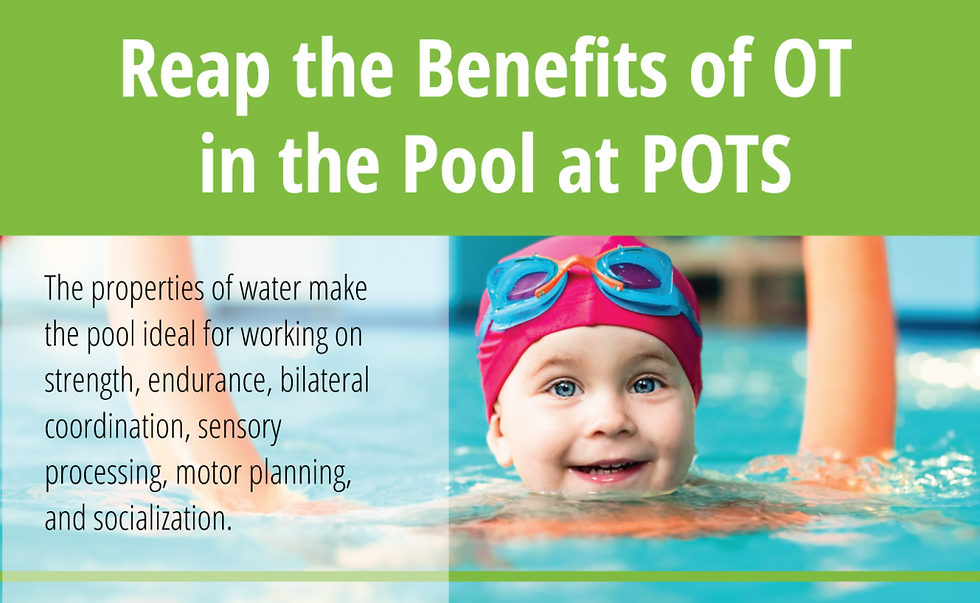Reap the Benefits of OT in the Pool at POTS
- May 14, 2019
- 2 min read
Updated: Jul 31, 2019

Strengthening: Negotiating the water requires your child to use all of his/her muscles. Your child’s core, arms and legs, will become stronger while playing against the resistance naturally provided by the water.
Coordination: Swimming requires a lot of coordination! While each stroke is different, they all require simultaneous movement from your child’s arms and legs in many different combinations: symmetrical, asymmetrical, in-phase, out-of-phase, contralateral and ipsilateral. As your child moves through the water using arms and/or legs with various fun floatation devices, he/she will learn how to coordinate a wide range of movements in multiple body parts at the same time, which is fundamental to coordination and motor planning.
Sensory input: Swimming is a great way to get a lot of powerful sensory input in a short amount of time. The beauty of the water is that it provides deep pressure input to the whole body at once. The constant pressure of the water can help to decrease the tactile hypersensitivity that your child may experience out of the water. The water also provides proprioceptive input, which boosts body awareness and the sense of body position in space. Changing the position of your child’s head when swimming on the back, front, side, vertically and under water provides vestibular input, which also contributes to the sense of body position in space. Touch, proprioception, and vestibular input are the building blocks of motor planning.
Social skills and communication: Eye contact and vocalization are often enhanced because of the sensory properties of the water and the natural boundaries of the pool. The pool is a relaxing and calming environment that promotes self-regulation, which is essential to open your child up for social communication.
Contact us to explore whether pool-based occupational therapy is appropriate for your child.




Comments